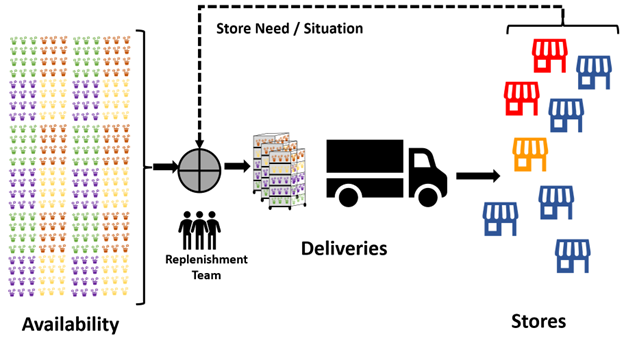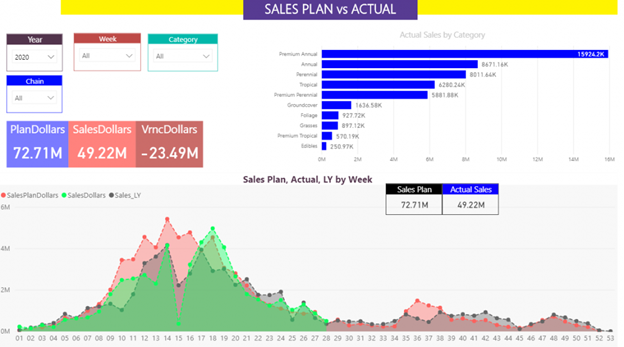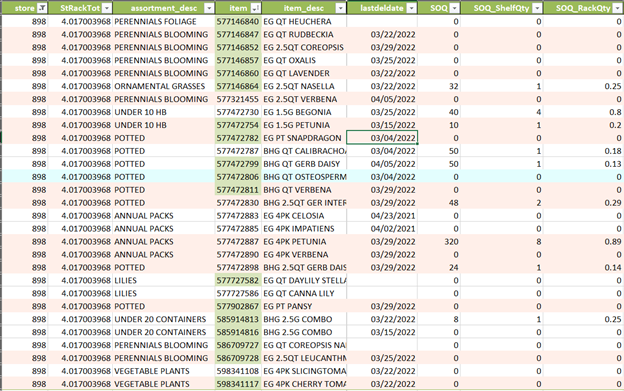
Keys To Success In Pricing Pay By Scan Programs For Growers
December 27, 2022
Delivering Data Your Way The Direct To Store Notifier Service
January 9, 2023For growers engaging in pay by scan there are many operational attributes that help improve execution. One, that is often in the background but is key to planning, managing, and evaluating your program is the software capability of your systems that enable the recordkeeping a grower needs for better pay by scan planning and execution.
Here are seven key areas of software capabilities that can help you execute your pay by scan or purchase order business more effectively.
Hold Key Data For Your Items And Stores
The software system must have the capability to store all the foundational data you need.
This data includes information about the stores and customers you sell to, store meta data such as volume indicators, geographic indications, etc.
Retail product information is crucial as well. Information such as the SKU, SKU to SKU group associations, and SKU prices are critical for any retail analysis.
Additionally, your own internal item mapping to the SKU as well as your own item meta data such as plant category, genus, or other grouping related meta data. Many growers want to see their item costs as well. In this manner, the grower can analyze both the retail customer margin as well as their own internal gross margin.
Finally, it helps greatly to have historical results and statistical data so that proper period comparisons can be made in your analysis and replenishment activities.
Track Deliveries to Stores
As deliveries are made to stores those deliveries need to be added to your software system. Having accurate delivery information, such as date, SKU, store, and SKU quantities start the inventory visibility cycle at the store and are the foundation for key statistics such as sell through.
You must know what you put in the store and when. As you replenish, especially annual crops, the ‘freshness’ factor can impact sell through and helps enlighten decisions regarding replenishment.

Copyright Advanced Grower Solutions
Receive And Aggregate Store Sales Statistics
As sales begin to happen your software system needs ways to access the data representing the sale. At its lowest level, you would need to know data items such as date, store, SKU, quantity, and price.
There are 3 basic ways you can get this information.
- Spreadsheet – download a sales report from the customer portal if they have one, or sometimes the buyer provides this information. Some retailer platforms allow you to schedule report generation as well.
- Web Forms – Access individual sales records in the customer online sales platform. These are manual download, and manual upload type systems.
- EDI automation – EDI allows the customer to send the necessary data related to the sales that have been made in the store, typically an EDI 850 or EDI 852 document depending on the customer.

Example EDI File
Copyright Advanced Grower Solutions
Our recommendation is that you use a reputable EDI platform to automate as much of this data transfer. Our customers have saved literally hundreds of hours in a season by taking advantage of automated data flows for their sales data. Read why Sexton Farms no longer has to wake up at 3:30 am after using GrowerEDI here.
Once the data is received it needs to be in your software system to facilitate the calculation of key statistics such as current inventory levels, sell-through, margin, etc. The software should do this automatically so your staff can focus on the results and not spend hours putting the data story together.
Manage And Record Store Scrap And Shrink
With any live good loss is inevitable. Whether disease, lack of watering, or theft you will have scrap or shrink in your stores.
If you do not record scrap or shrink your calculations for sellable inventory will be overstated and this will misinform your plans for any replenishment activities. Additionally, it can skew reporting.
Your merchandisers or store personnel can collaborate with you and should be able to update store inventory with changes.
Ideally, your software system provides a way for the scrap or shrink to be recorded easily by merchandisers or store personnel so that your records and up to date and current for any daily calculations that are done.
Provide Key Pay By Scan Reports And Statistics
As the data flows in regarding deliveries, sales, and shrink, the key statistical reports can now be calculated and then reviewed by your staff.
It is desirable that your software system provided automated notification of key statistics with key comparisons. In this manner, your team can get a high level of view of activity and results and minimal effort.

Sample random data to illustrate report
Copyright Advanced Grower Solutions
Additionally, the software system should provide Ad Hoc report builders so that detailed analysis can be run and evaluated. This could include such things as more detailed store-sku sell through or margin analysis. Typically, this kind of detailed reporting provided by your system is more diagnostic in nature and can help your staff identify trouble spots that may need special attention or consideration in particular stores or categories.

Sample Data shown for Sample Grower
Copyright Advanced Grower Solutions
Show And Track Product Availability
Once you have a picture of the store situation you may need to replenish.
However, you can only replenish what you have available. Your software system should provide mechanisms to update your in field or greenhouse availability of your items. Some systems have a by location availability or other use gross counts. Either way, it is crucial to have current updates to your availability numbers in your system in order to start any replenishment analysis.
The software system should provide reporting to juxtapose the availability with store SKU statistics, imputed store-SKU need, and other key data to show your staff what they need in one place.
Having this all together improves the efficiency of your replenishment decisions and your store order writing effort.
Replenishment Orders
Replenishment capability closes the loop in terms of your product flow. With the proper data, statistics, and store picture coupled with the availability of your plants or items, your staff can proceed to decide the key replenishment question: ‘How much of SKU X to put into Store Y this Thursday’. Granted, there are many techniques, and equations to try to answer that question. Some systems go so far as to use thousands of data points to attempt to predict future sales and advise on what the ‘suggested order quantity’ should be for a given store SKU combination.
The software system should provide mechanisms to allow your staff to see imputed store needs, capped by availability, and then to prepare and edit proposed orders, and export/transfer for the back-end fulfillment system for picking and shipping.

Sample automated Replenishment worksheet generation
Copyright Advanced Grower Solutions
We have seen automation improvements save growers large amounts of time and money.
Learn more about the Pay by Scan model arrangement between growers and big-box retailers as well as information on software capabilities needed for this model and key factors for success. Read the Pay by Scan Playbook here.
Bottom Line
Pay by scan as a model puts more risk on the grower. The grower can help mitigate some of that risk with software systems that provide key capabilities such as record keeping, updating, statistics and reports, scrap or shrink, availability and replenishment. Astute growers intuitively know that the collaboration of competent staff coupled with effective software systems can increase the probability of success.
If you are a grower looking to improve your operation, contact us to learn more and schedule a free demo.





